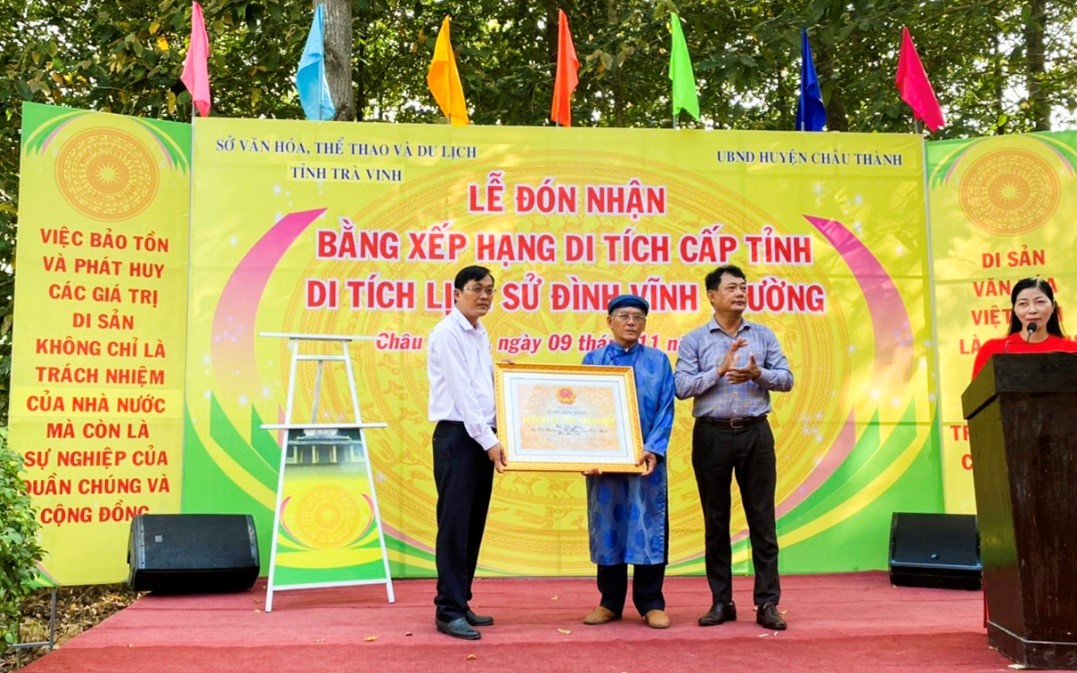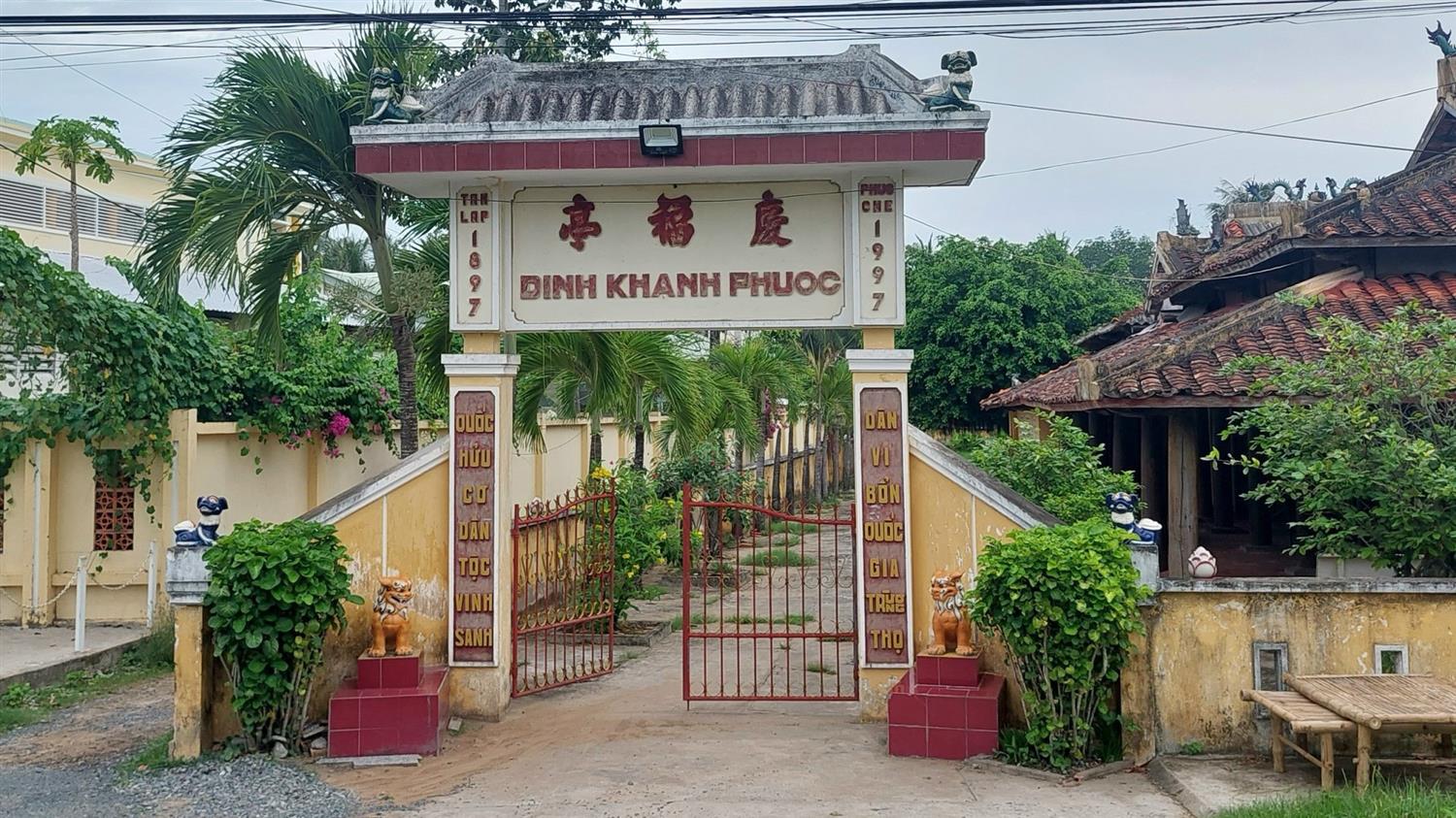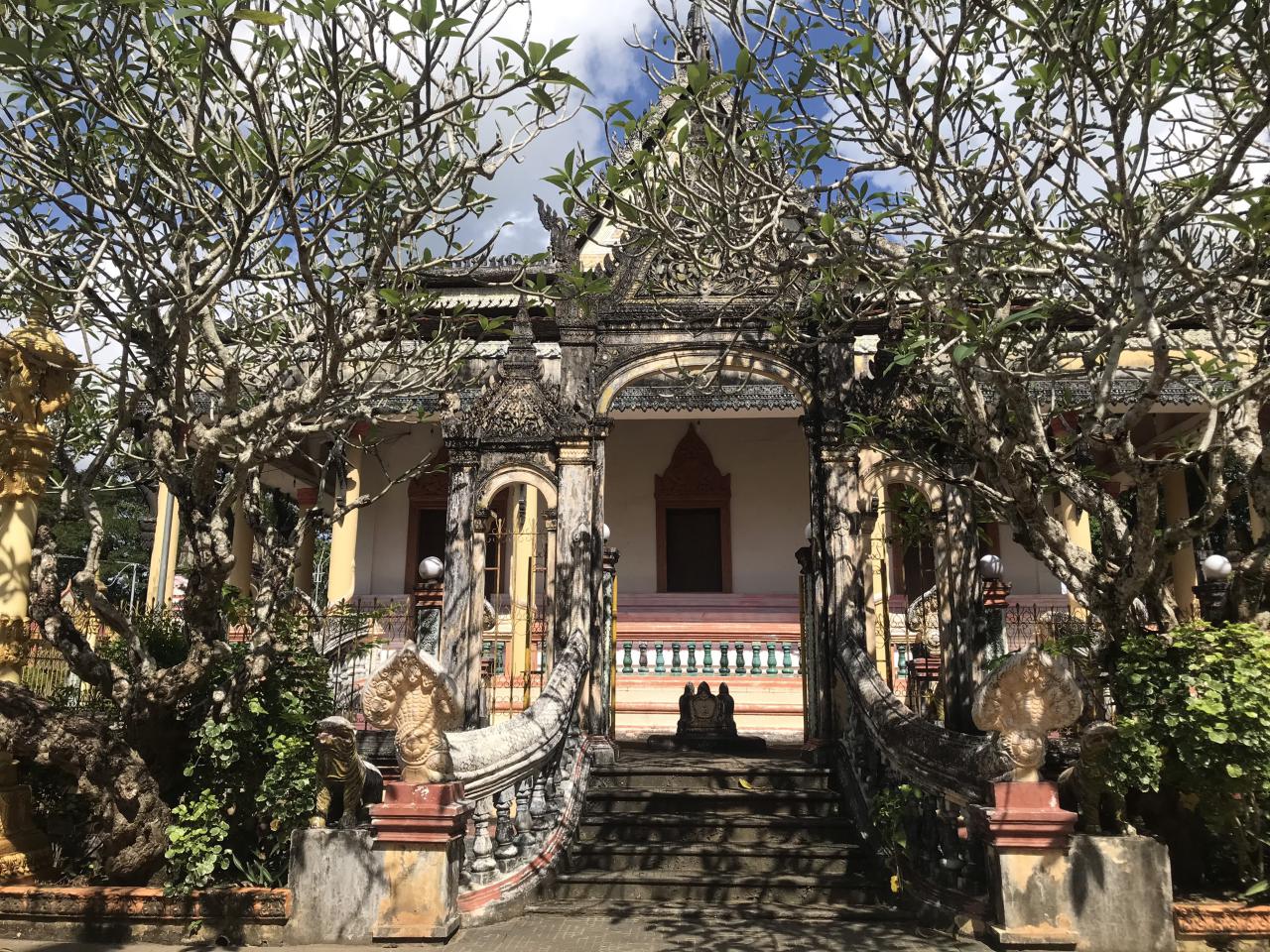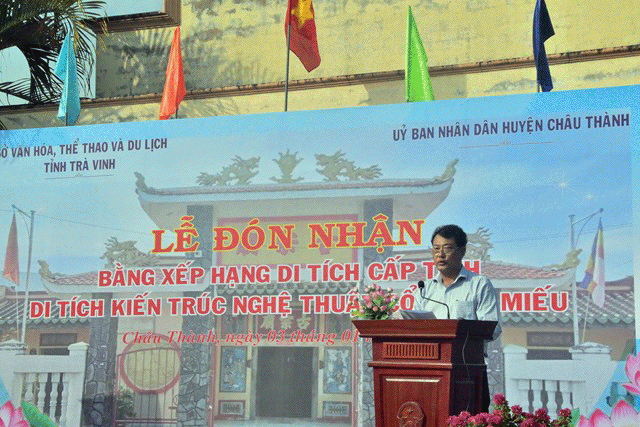Champabôrây Temple, also known as Trốt Lích Temple or Sóc Nách Temple, is located in Ward 5, Châu Thành Town, Châu Thành District, Trà Vinh Province.
Champabôrây Temple was built in 1612 AD, which corresponds to the year 2156 in the Buddhist calendar. Since its construction, the temple has seen 13 generations of abbots and venerables, with the current abbot being Venerable Son My
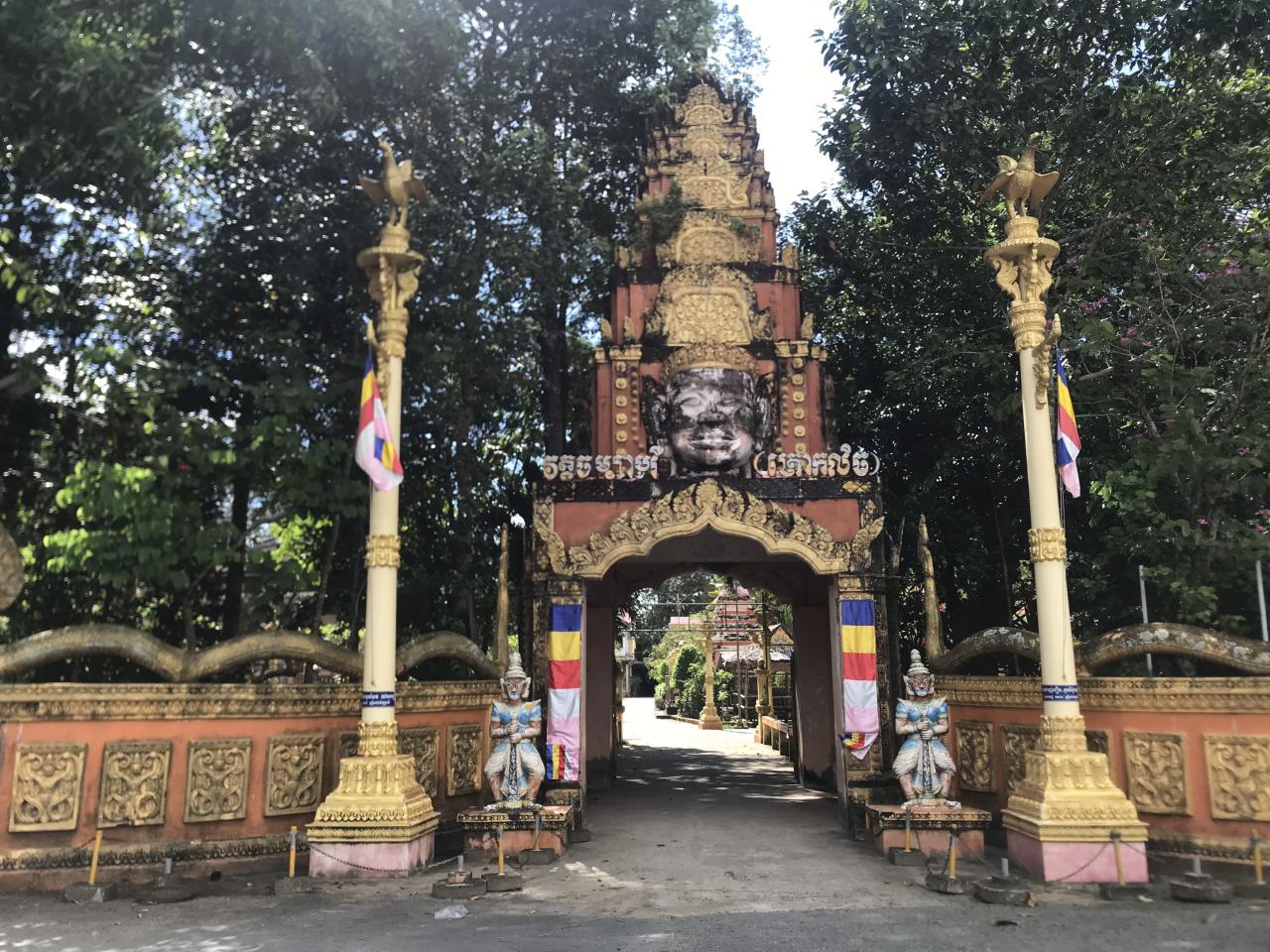
Resistance Against the French Colonial Invasion: During the resistance against the French colonial invasion, the monks and Buddhist community of Champabôrây Temple engaged in various patriotic activities. They fought for reduced taxation, demanded lower levies, and resisted the exploitation imposed by landlords, colonial authorities, and their agents. The monks and Buddhists of the temple shared a common revolutionary spirit and participated in the August Revolution of 1945, which led to the transfer of administrative control over Đa Lộc commune to the revolutionaries on August 25, 1945.
Resistance Against the United States: As the struggle against the United States escalated, Champabôrây Temple contributed in numerous ways. They secretly provided shelter and protection, organized and mobilized Buddhist communities for food and financial contributions, and offered a sanctuary to young individuals, not only among the Khmer population but also among the Kinh and Chinese communities, to evade conscription. However, the most notable event was the initiation and participation of the temple in political struggles against the Nguy regime.
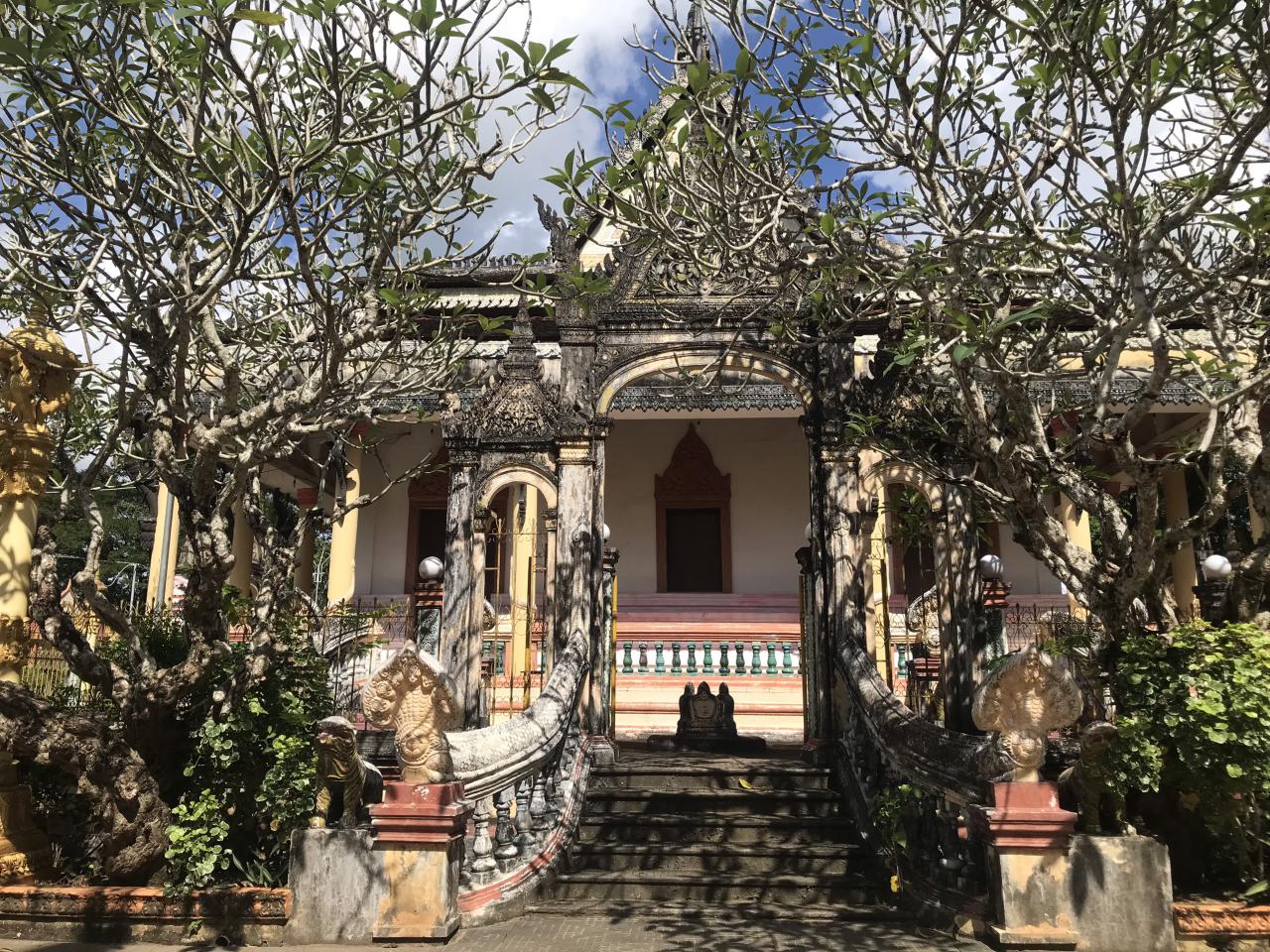
Given its proximity to the provincial capital and the intense enemy presence in Châu Thành District, the temple’s leadership and authorities decided that the most suitable course of action was to organize and participate in political movements. This became a crucial front alongside military, logistical, and diplomatic fronts in achieving victory. For Champabôrây Temple’s monks and Buddhists, this involved direct confrontations with the enemy, with some notable instances including:
• Resistance Against Police Conscripting Monks on February 20, 1965: In early 1965, the enemy aimed to increase their troop numbers for pacification efforts. They concentrated their forces to surround the temple and apprehend monks, including those of Khmer and Kinh descent, for military conscription. On February 20, 1965, when the police surrounded the temple, led by Abbot Thạch Gồng, the monks and Buddhists used improvised weapons to resist. The enemy resorted to using tear gas and detained several individuals, returning them to Trà Vinh.
• Participation in the Protest on September 5, 1969: On September 5, 1969, Champabôrây Temple actively organized and participated in a protest. Leading figures like Venerable Lâm Neo, Venerable Kim Cộng, and others, including Dương Xúc (Khuộk) and Thạch Hưa from the Temple’s Administration Board, played key roles in organizing this protest. The protest, which had guidance from Venerable Trần Dạnh, Deputy Head of the Patriotic Monks’ Association in the Southwest Region and the Provincial Patriotic Monks’ Association, involved around 3,000 monks and community members. Among them, over 400 were from Champabôrây Temple. The protest consisted of both frontline activists and support teams providing food, flags, loudspeakers, and medical supplies. In addition to Châu Thành, monks and community members from nearby temples in Trà Cú District also joined the demonstration.
• Resistance Against Monks’ Conscription into the Military on August 8, 1972: Originating from the enemy’s capture of two monks, Thạch Ba Nha and Thạch Chrọm, from the temple and taking them into custody at the Đa Lộc commune headquarters. The temple’s deputy abbot, Kim Cộng, along with Acha Dương Thông, Acha Trần Phinh, Thạch Cuộne, and several members of the Temple’s Administration Board such as Mr. Dương Xúc (Khuộk) and Thạch Hưa, organized more than 150 monks and Buddhist followers to resist.
• On the evening of August 8, 1972, a protest march reached the commune headquarters to demand the release of the two captured monks. Faced with public pressure, the Đa Lộc commune authorities reported to their superiors, who requested reinforcement. They sent Troop 404 from Trà Vinh while also preparing GMC vehicles to apprehend more monks. The enemy utilized firearms and tear gas to threaten and intimidate the demonstrators. Amid intense struggles, they detained four more monks: Thạch Cuộne, Thạch Canh, Thạch Hương, and Thạch Song, loading them onto vehicles and taking them to Cần Thơ for detention. The movement continued relentlessly in the following days, and on August 21, 1972, the enemy was forced to release the captured monks back to the temple.
